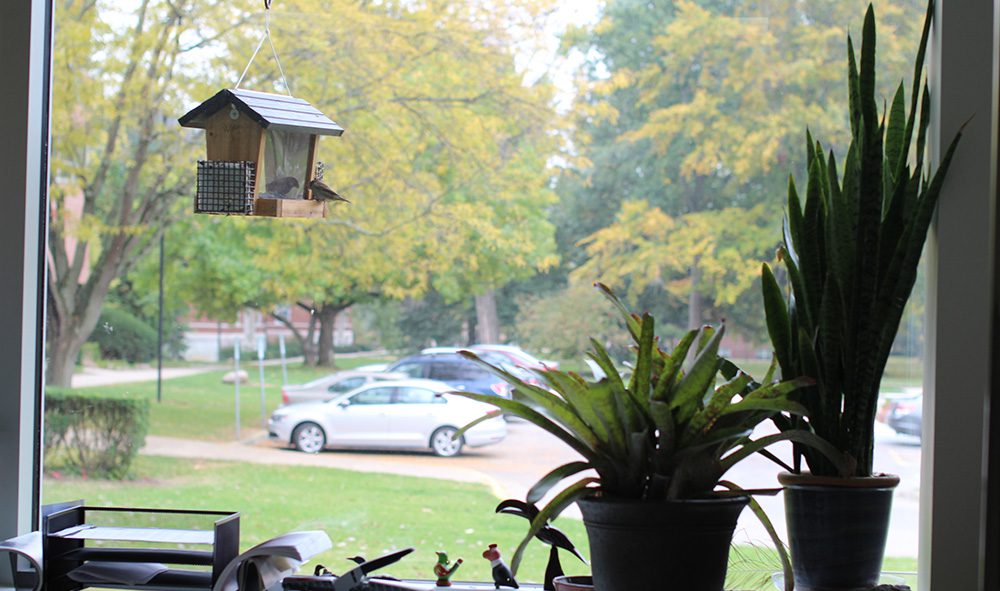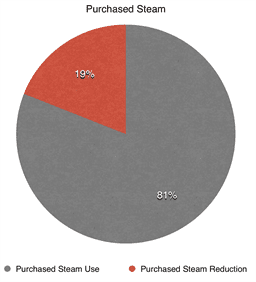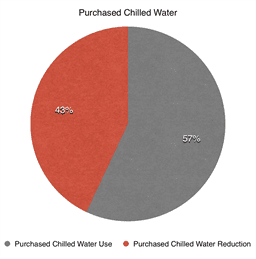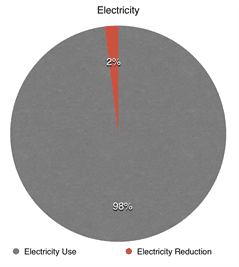Green buildings
Earlham is committed to seeking LEED certification on new green buildings and renovation projects. LEED (Leadership in Energy and Environmental Design) is the most widely used green building rating system in the world. An initiative of the U.S. Green Building Council, LEED recognizes building practices that are environmentally and financially sustainable.
Earlham has four LEED-certified buildings: The Center for Visual and Performing Arts and the Center for Science and Technology both have achieved gold LEED certification. Stanley Hall has a earned LEED silver certification and Tyler Hall has basic LEED certification.
Development density and community connectivity
One aspect of a sustainable construction project is its location and its connectivity with its surrounding community. Earlham’s LEED certified buildings are within a half-mile of a neighborhood with an average density of 10 units per acre net. The buildings are located within a half-mile of at least 10 basic services, including a supermarket, restaurant, school, convenience stores, library, fitness center, park, place of worship, and funeral home. There is pedestrian access between the buildings and these services.

Green buildings efficiency
Water
The ability to use water efficiently is an important factor of a sustainable building.
Energy
One aspect of sustainability is using energy efficiently.
Construction
Reducing, reusing and recycling construction waste is important in constructing and renovating buildings in a sustainable way.
Water use and efficiency
Water efficient landscaping
A sustainable construction project needs to have surrounding landscape that uses water efficiently. The landscaping installed does not require permanent irrigation systems. Temporary irrigation systems used for plant establishment will be removed within eighteen months of installation.
Earlham College has a landscape architect on staff who has always selected plants native or naturalized to the area to eliminate the need for irrigation. There are no irrigated areas, including landscaping, throughout the campus per the college’s commitment to reduce resource use.
Water use reduction
The ability to use water efficiently is an important factor of a sustainable building. The reduction of water use must be at least 30% in order for new construction and major renovations to earn points in the LEED scorecard. The renovated Stanley Hall uses 42% less water across all fixtures than the building used before renovation.
Energy use reduction
The charts below illustrate energy use performance in Stanley Hall in electricity, chilled water, and steam. Chilled water is used for cooling and steam is used for heating the building.



Lighting and thermal control
Just because a building is efficient does not necessarily mean it’s a place people want to be. In Stanley Hall, lighting and thermal controls were provided throughout to allow building occupants adequate control of the light and temperature in their immediate surroundings. This contributes not only to a more comfortable learning environment for students and professors alike but also contributes to the efficient operation of the building. Rather than a single control to turn on the lights or change the temperature in a large area of the building, adequate controls were designed and installed to allow smaller groups to adjust their environment. This eliminates lighting or heating areas of the building that aren’t being used, increasing the overall efficiency of Stanley Hall.
College energy usage
Sustainable construction
Construction waste recycling
Recycling construction waste is important in constructing and renovating buildings in a sustainable way. Construction waste from renovating Stanley was diverted from the landfill in significant amounts. The total construction waste was 789.78 tons, yet 79.72 percent of the waste, or 629.6 tons, was diverted from landfill and recycled by multiple companies: Recycling Center, Inc., Big B Waste Services, Hayes Landfill, Recycle Logic Inc., Lighting Resources LLC, and Preferred Metals Corp.
Low-emitting materials used
All sealants, paints, floors and ceilings in Stanley Hall were carefully selected with a focus on reducing or eliminating Volatile Organic Compounds (VOCs) from the products permanently installed inside the building. VOCs contribute to the “new car” or “new building” smell that you might notice when entering a new car or building. VOCs are indoor air contaminants that are odorous and can be irritating and/or harmful to building occupants. By reducing VOCs, building occupants should all be able to breathe easier while inside.
Building reuse
Reusing materials from the original building is a great way to save materials from ending up in the landfill. In order to earn points for the Building Reuse category LEED scorecard, a new construction or major renovation must include at least 55 percent reused materials, maintaining existing walls, floor and roof. In fact, Stanley Hall uses 96.4 percent of materials from its existing foundation structure, structural roof deck and exterior walls (excluding windows).